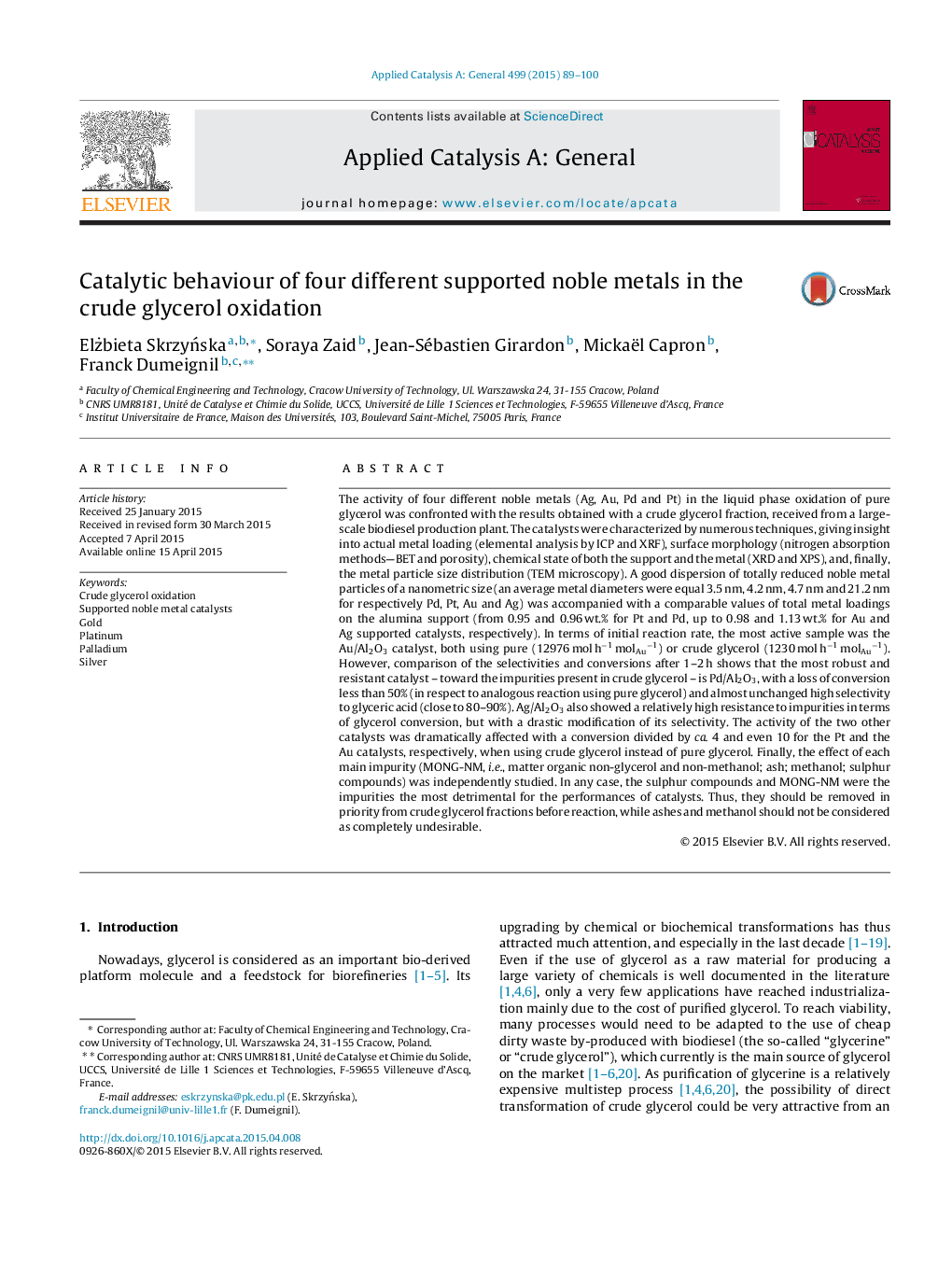| کد مقاله | کد نشریه | سال انتشار | مقاله انگلیسی | نسخه تمام متن |
|---|---|---|---|---|
| 39189 | 45812 | 2015 | 12 صفحه PDF | دانلود رایگان |
• Response of the catalyst depends on type of noble metal used.
• Pd/Al2O3 shows the highest resistance to crude glycerol impurities.
• Selectivity of silver supported catalyst alters in crude glycerol.
• Organic sulphur and fatty acid derivatives are the most problematic contaminants.
The activity of four different noble metals (Ag, Au, Pd and Pt) in the liquid phase oxidation of pure glycerol was confronted with the results obtained with a crude glycerol fraction, received from a large-scale biodiesel production plant. The catalysts were characterized by numerous techniques, giving insight into actual metal loading (elemental analysis by ICP and XRF), surface morphology (nitrogen absorption methods—BET and porosity), chemical state of both the support and the metal (XRD and XPS), and, finally, the metal particle size distribution (TEM microscopy). A good dispersion of totally reduced noble metal particles of a nanometric size (an average metal diameters were equal 3.5 nm, 4.2 nm, 4.7 nm and 21.2 nm for respectively Pd, Pt, Au and Ag) was accompanied with a comparable values of total metal loadings on the alumina support (from 0.95 and 0.96 wt.% for Pt and Pd, up to 0.98 and 1.13 wt.% for Au and Ag supported catalysts, respectively). In terms of initial reaction rate, the most active sample was the Au/Al2O3 catalyst, both using pure (12976 mol h−1 molAu−1) or crude glycerol (1230 mol h−1 molAu−1). However, comparison of the selectivities and conversions after 1–2 h shows that the most robust and resistant catalyst – toward the impurities present in crude glycerol – is Pd/Al2O3, with a loss of conversion less than 50% (in respect to analogous reaction using pure glycerol) and almost unchanged high selectivity to glyceric acid (close to 80–90%). Ag/Al2O3 also showed a relatively high resistance to impurities in terms of glycerol conversion, but with a drastic modification of its selectivity. The activity of the two other catalysts was dramatically affected with a conversion divided by ca. 4 and even 10 for the Pt and the Au catalysts, respectively, when using crude glycerol instead of pure glycerol. Finally, the effect of each main impurity (MONG-NM, i.e., matter organic non-glycerol and non-methanol; ash; methanol; sulphur compounds) was independently studied. In any case, the sulphur compounds and MONG-NM were the impurities the most detrimental for the performances of catalysts. Thus, they should be removed in priority from crude glycerol fractions before reaction, while ashes and methanol should not be considered as completely undesirable.
Figure optionsDownload high-quality image (138 K)Download as PowerPoint slide
Journal: Applied Catalysis A: General - Volume 499, 25 June 2015, Pages 89–100
